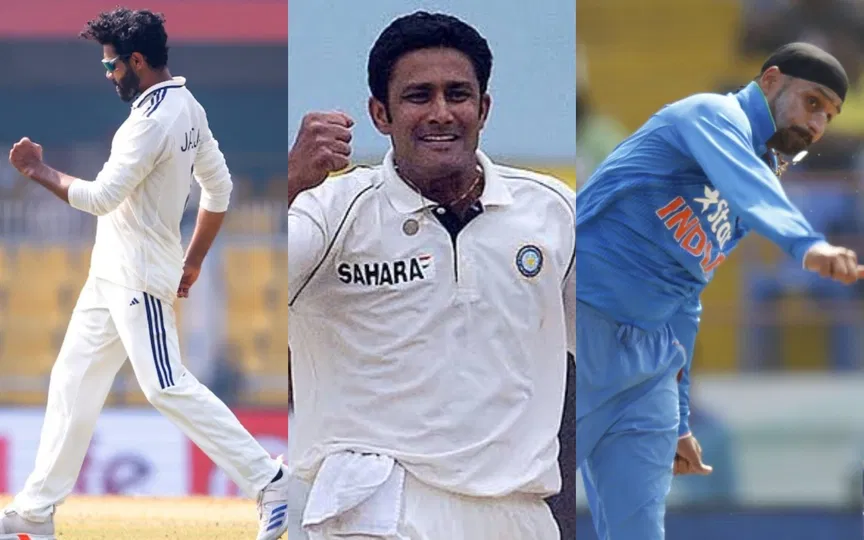.jpg?type=hq) India vs South Africa - (Source: AFP)
India vs South Africa - (Source: AFP)
South Africa have been too good in Guwahati, and India, on the other hand, have looked totally clueless at their home. The ongoing Test hasn't felt like an-off day for the Indian team, but actually the difference of quality between the two teams.
India are on the brink off an embarrassing whitewash at home against South Africa, which will be their second after the New Zealand series last year. The fans are puzzled by the sudden dip in standards of Indian cricket. Fingers are pointed at Gautam Gambhir and the demands for his sacking is at an all-time high.
Further, the perplexity whether South Africa are too good or it is India who are playing a mediocre brand of cricket needs to be examined and pointed out.
South Africa with better understanding of home conditions
From Day 1, South Africa read the Guwahati surface better than the hosts and batted with patience and clarity, turning 247/6 into a commanding 489 through Senuran Muthusamy’s century and crucial lower-order stands with Kyle Verreynne and Marco Jansen.
In reply, India were in hurry to close down the target, but careless batting from Dhruv Jurel, Rishabh Pant let the team's morale down. Further Marco Jansen picked up a six-wicket haul to leave India way behind in the match.
The surface offered help for both seamers and spinners, but India failed to understand the pitch. The surface required patience, which was quickly understood by the Proteas, whereas India struggled to get a grasp of it until the end of Day 4.
Gambhir's experimentation hurting India
One of the primary reasons behind India's dismal form is Gautam Gambhir's constant experimentation in the group. For a team to rule their home surface, they need to have a stable playing XI.
Forget a stable side, the Indian team is unaware of their batting positions. Washington Sundar, who was slipped to No. 3 in the first Test, was placed down to No. 8 in the 2nd Test. Similarly, Nitish Kumar Reddy, who is in the team as an all-rounder, bowled just 11 overs in two innings, seriously questioning his all-round abilities. Axar Patel, who was the star in the first Test
Even in the fourth innings, India promoted Kuldeep Yadav to No. 4 towards the end of Day 4 because of his heroics in 1st innings. Therefore, the first step towards winning days is to bring stability in the team and not make frequent chops and changes.
Kuldeep Yadav's show with the bat showed pitch had no demon
South Africa, in the first innings, put 489 runs on the board, whereas India tumbled for just 201 runs. There were questions of the pitch behaving differently. However, Kuldeep Yadav showed that all it took was patience. Notably, in the first innings, Yadav scored just 19 runs but played 134 balls, the most by any batter in the team.
Thus, it is fair to say that rest of the players too could have shown the same temperament and played according to the demand of the surface and the game, rather than just playing the natural game.
Mental gap as much as skill gap
The contrast in body language was stark: South Africa treated every session as a small, winnable contest, while India seemed to play the match narrative — whitewash threat, WTC pressure, home expectations — instead of the ball in front of them.
South Africa’s batters trusted their plans on a slow, turning track, using sweeps, reverse sweeps and rotation against spin, whereas India’s top order looked trapped between staying in and scoring, leading to half-committed strokes and soft dismissals.
Notably, Rishabh Pant preserved the seamers in the match as Jasprit Bumrah and Mohammed Siraj bowled just 11 overs in the 2nd innings, despite the pacers picking up 11 wickets and spinners 16 in the ongoing Test.
South Africa cleverly rotated their bowlers and brought in pacers when required such as against Yashasvi Jaiswal, who often falls into the trap of left-arm seamers in search of his cut shot.
What this says about India at home
Guwahati breaks the familiar script of India bullying visiting sides with pace and spin at home; here it was South Africa dictating the tempo, extracting more from the same surface with smarter lengths, fields, and patience.
Lack of long spells of discipline with ball in hand and a middle order that no longer guarantee success in tough sessions. When those individual highs don’t arrive, India suddenly look ordinary, and Guwahati has underlined how quickly they can go from favourites at home to a side scrambling for answers.
So, too good or too weak?
The honest answer is that South Africa have been outstanding in their planning and execution, but India have also made them look even better by repeatedly giving up initiative: loose spells with the ball, soft dismissals, and reactive tactics.
Guwahati will be remembered as a Test where South Africa showed what a coherent, hungry touring side can do in India — and where India, for once at home, looked like the team unsure of conditions, options, and, most worryingly, their own belief.




.jpg?type=mq)
